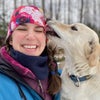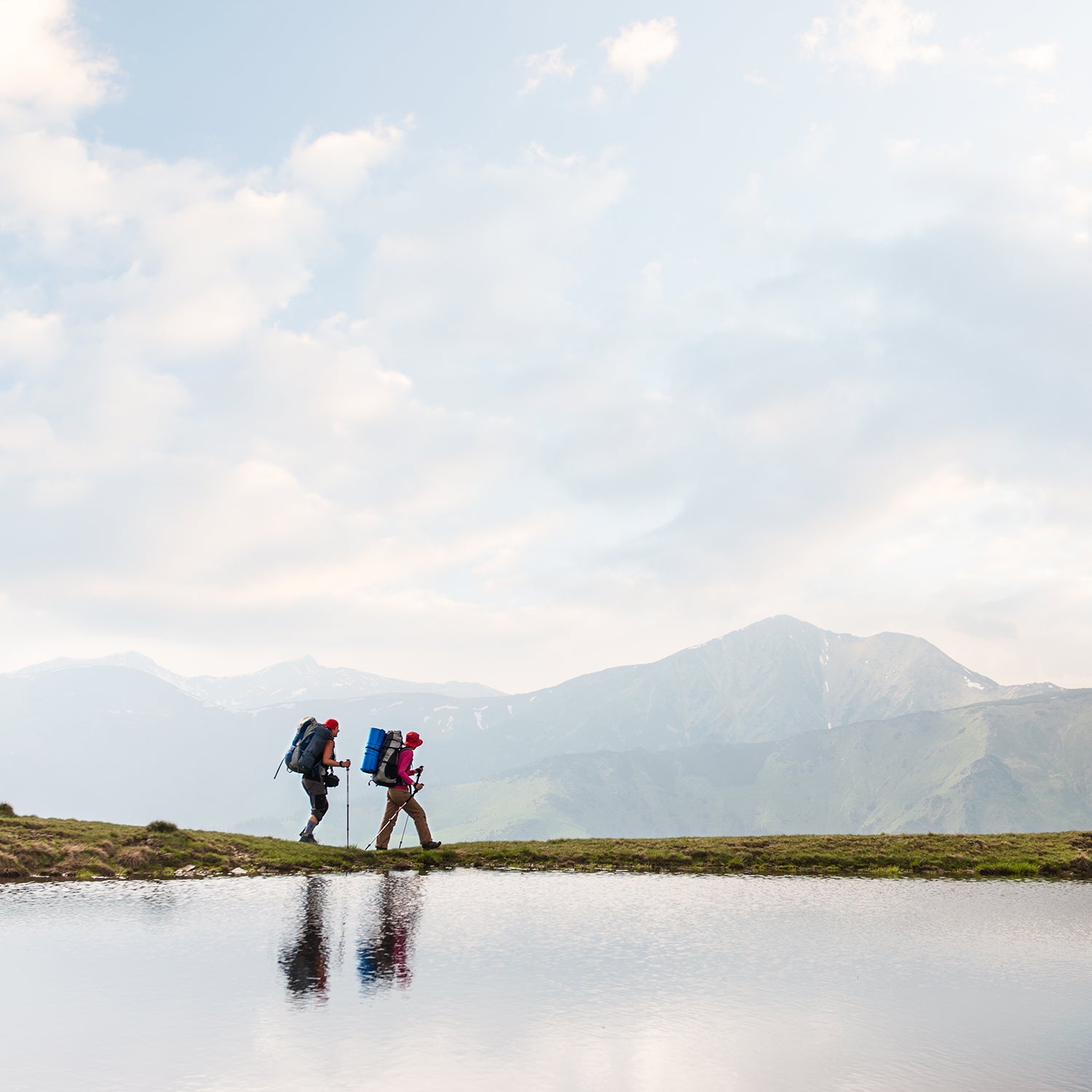Welcome to Tough Love. Every other week, we’re answering your questions about dating, breakups, and everything in between. Our advice giver is Blair Braverman, dogsled racer and author of . Have a question of your own? Write to us at toughlove@outsidemag.com.
Q: My girlfriend and I are planning a thru-hike for next summer. Our relationship is really solid, but I know that any friendship, romantic or not, can be stressed by spending that much time (four to five months) in what basically amounts to isolation. What advice do you have for keeping our relationship strong during extended time in the backcountry?
—Alone Together
Years ago, I planned a thru-hike with my then-boyfriend. Our friends told us if we still liked each other by the end, then we could handle anything. In fact, by the end of the trip, trail life had rocked us into a kind of blistered romantic bliss. Then we returned to civilization and promptly broke up.
Which is all to say that my advice on this subject is suspect. Instead, I brought your question to an expert: , adventurer and all-around badass who set off on a 1,700-mile honeymoon with her husband and wrote about the experience in her book . The kicker? They’re still happily married 18 years later.
Take it away, Julie.
For our honeymoon, my husband and I embarked on a 15-month expedition from Lake Superior to the Canadian north—and though we were in our thirties and had planned the trip for nearly two years, we never really sat down and considered this question. Charly was an experienced adventurer and warned that the trip would be difficult. He wanted me to think deeply about whether I was up for it. But that’s not how I’m wired. I dive in and ask questions later. At the time, I possessed such a romantic notion of trail life—the two of us cooking over an open fire, loons warbling in the distance—that I didn’t bother to consider his warning.
It took 16 days of travel for the warning to sink in. On May 16, 1999, we had one of those hard days, paddling and portaging in the wind and rain along the Frost River. Despite the cold, the black flies, our soggy feet, heavy packs, and the constant drizzle, we covered the day’s distance—and then realized there wasn’t a legal campsite for another ten miles. Finally, miserable, we scratched out a rocky, illegal campsite. That night, I did the math. We had 434 days to go. Why were we doing this?
Charly and I talked it out: We were on an adventure. Together. And that’s all you need sometimes: someone to share your misery, validate your doubts, laugh at every absurd situation. The next day, we woke to sunshine; within another two weeks, our blisters hardened, and our packs felt lighter each day. We sat by campfires and listened to loons, took solar showers, and baked bread in our Dutch oven. We met fellow travelers, and each one of them buoyed us. Over the next four months, we traveled 1,700 miles by canoe, then paddled to our winter destination at a remote island cabin in northern Saskatchewan. We planned to overwinter, and then travel north in spring—first by snowshoe, then canoe, all the way to the Arctic sea. Those fall days passed in a blur of trout fishing, gathering blueberries and cranberries, hauling supplies, and chopping wood. People from the nearest town stopped by, curious about our situation, and brought us mail from friends and family back home.
But then came the gray days of November—the in-between season. The lake grew too rough for travel to and from town. That’s when it got really hard.
I didn’t realize until then how badly I need to be around people. I’d sooner hike a thousand miles than sit alone for a week, and here we were, trapped. No mail. Nothing. I was an extrovert stuck in an isolation tank. Charly’s an introvert, and even he was struggling. To shake off our funk, we wrote out a list of rituals to give our weeks a sense of purpose. The tasks were nothing exciting: laundry, poetry reading, bread baking, floor mopping, etc. And crazy as it sounds, it worked! For two whole days. On the third day, Charly woke me with “It’s laundry day!” and I started sobbing. When he tried to cheer me up by mentioning Knock-Knock, my husky at home, I only cried harder. I missed home. I missed my family. I missed talking to people. When Charly hugged me and offered to do whatever I needed, I realized that, in a way, that was exactly what I needed: his offer. The knowledge that he was on my side. A week or so later, the lake froze over and our world reopened. People from town rode snowmobiles to bring us mail, then came in for coffee, cookies, and shared stories. We traveled north to see the caribou herds, winter camped to explore our island, and skied to town to eat dinner with our new friends.
We were on an adventure. Together. And that’s all you need sometimes: someone to share your misery, validate your doubts, laugh at every absurd situation.
In April, days before we were to depart on the second leg of the expedition, we received a message that Charly’s father was in the hospital, his cancer no longer in remission. After months of wearing the same pants, eating the same food, and talking to the same person, I didn’t want to go. I didn’t want to leave the intimate life we’d built on the trail, the frozen landscape and the light and the space that was ours alone. But Charly and his dad needed me to.
That’s when I did the hardest thing I’ve ever done. I quit. Eleven months after taking to the wilderness, we turned around and went home.
This is a long way of telling you that you can’t predict what will happen, that sometimes the smallest things are the hardest, and then the big things are harder still. You and your girlfriend will be a team in the truest sense of the word. You’ll be caring for each other as much as for yourselves. Here are some steps you can take to prepare.
- Take a Myers-Briggs personality test, just for fun. Talk through what your internal challenges might be and how you might deal with those challenges. If one of you is an extrovert or really connected to family, you may want to make plans for friends or family to meet you along the trail.
- Remember that conversation that Charly and I had on the sixteenth day? Here’s your chance to iron out that stuff now. Write out a mission statement. Nothing fancy—just an agreement about why you’re taking this trip and what you hope to accomplish. Most important, write out why you want to do this together. In your toughest times, pull out your mission statement and read it aloud.
- Learn the lyrics to your favorite songs, and to her favorite songs, and sing them on a day when she’s feeling blue. You’ll miss music, and I promise you’ll get partial lyrics stuck in your head. (Once, on Lake Winnipeg, Charly mentioned that we needed to get motoring, and for the next 20 days the chorus of Night Ranger’s “” looped in my head.)
- This will be the most creative time in your life. Take a journal and colored pencils. Write poetry and sketch the scenery. Read great literature that you’ve never had the time for. Choose books you can read aloud to each other and have conversations about. I recommend Larry McMurtry’s ; I found it on the top shelf of our winter cabin, and Charly and I laughed and cried together with those cowboys driving cattle from Texas to Montana.
- Make a plan for your return. However your trip ends, it takes time to adjust back to the real world of jobs, commitments, social media, and friends. Hold on to one another, and plan time for just the two of you. You’ll need to help each other adjust.
During our first days on the trail, a reporter did a story about our trip. The subhead read: “Some couples can’t wallpaper together, these two are paddling to the Arctic.” The funny thing, though, is that paddling is easier than hanging wallpaper. Embrace this precious time. Be grateful for it. I speak in public about my travels, and after every presentation, at least one person approaches with a wistful look. I know what they’ll tell me: that they, too, once dreamed of a big trip that they wished they’d taken. You and your girlfriend will have no such regrets—and that’s everything.
Your turn—ask away at .


